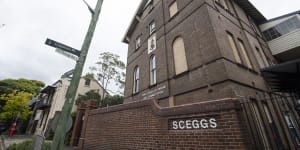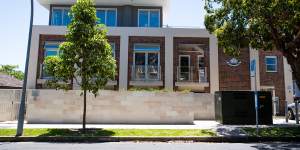Fresh data published in response to a Senate estimates question details the median taxable family incomes for parents at the state’s non-government schools.

It is the first time the figures have been released after the Direct Measure of Income – a method that ranks schools based on parents’ income to determine how much government funding flows to each school – was rolled out in 2022.
Parents at SCEGGS,Mosman Preparatory School and Redlands earn median incomes over $450,000. Eight schools,including Cranbrook and Shore School,have parents with median family incomes over $400,000.
About 150 non-government schools in the state,or roughly 20 per cent,have parents with a median taxable income above $200,000.
Principals have previously said the new system has forced schools to lift fees to offset the Funding levels for private schools are being adjusted for fairness under the Gonski model until 2029.

Parents with children at SCEGGS Darlinghurst have the highest median incomes in Australia,new figures show.Louise Kennerley
At least one Sydney private school told parents this year that fees would need to be increased in term 3 to try to make up for a shortfall in government funding.
An analysis of the data by public education advocate Trevor Cobbold shows that of private schools where parents’ income exceeds $200,000,about 50 will receive a total of $347 million in federal funding above the resourcing standard over the seven years to 2028.
“The new figures demonstrate the unfairness of the school funding system. Wealthy private schools are overfunded while public schools that serve the most vulnerable and disadvantaged continue to be vastly underfunded,” Cobbold said.
Cobbold,who runs public education advocacy group Save Our Schools,analysed parents’ financial data against federal funding. It reveals Loreto Kirribilli,Newington College and St Augustines – where parents’ median income exceeds $300,000 – will each receive more than $11 million in federal funding above the school resourcing standard from 2022-28.

Students at Mosman Church of England Preparatory School have the highest-earning parentsEdwina Pickles
Private schools are given a “capacity to contribute” score to determine their government funding based on how much the parents can afford to pay. The DMI system uses income to determine funding rather than the previous method,which used address-based data.
Cobbold argues the DMI method underestimates the capacity of private school parents to pay fees because it does not consider other sources of income of families and the schools.
Association of Independent Schools of NSW chief executive Margery Evans said funding for every Catholic and private school was reset when the government changed the model.
“This resulted in some schools attracting more funding and others attracting less. An adjustment phase was implemented to avoid abrupt cuts that would have impacted school budgets and parent fees,” she said. “Each non-government school is managing this transition by cutting its costs,raising fees or a combination of both.”
“Every non-government school is receiving the funding amount it is meant to receive at this time.”

Evans said some mid-fee schools that raised fees had reported that they were losing students from families at the lower end of the income scale,which had the knock-on effect of lifting their “capacity to contribute” score.
Almost 90 private schools lost money when the new model was introduced. Funding varies due to the number of students in each school.
Australian Education Union president Correna Haythorpe said no NSW public schools were funded at the Schooling Resource Standard (SRS),the minimum level governments agreed a decade ago was required to meet the needs of students.
“The new figures exposed the staggering inequity in school funding. In contrast to public schools,every private school in NSW is either funded at or above their SRS entitlement.”
“Fully funding public schools is the only way to ensure every child gets the support they need to succeed,and we can recruit and retain sufficient numbers of teachers,” she said.
Federal Education Minister Jason Clare,who is negotiating with the states and territories for new funding deal this year,said most non-government schools were at the 100 per cent funding level that David Gonski set.
“Public schools,outside of the ACT,are below that level and are not on track to meet it. We’ve got to fix that funding gap. That requires the Commonwealth to chip in and the states and territories to chip in,” he said.
“We need to develop a new agreement which funds our schools properly,sets targets and invests in the practical reforms to help kids catch up,keep up and finish school.”

Greens senator Penny Allman-Payne,who asked the question at Senate estimates that resulted in the median incomes being released,said the “promise of Gonski was a needs-based,sector-blind funding model that would direct spending to the kids that need it most”.
“But it’s clear the opposite has happened. The private sector is favoured above the public system,and poorer,regional and remote and First Nations kids are the ones who suffer,” she said.
The Schooling Resource Standard (SRS) estimates how much government funding a school needs to meet its students’ educational needs,based on Gonski review guidelines.
The Commonwealth contributes at least 20 per cent of public schools’ funding,with states picking up the rest. For private schools,the formula is reversed,with the federal government contributing at least 80 per cent of their taxpayer funding.
Cobbold’s analysis examined funding estimates for each school’s SRS from 2022 to 2028,to determine if the contribution was above or below the federal benchmark over the period. Data is unavailable for some individual schools held in larger property trusts,such as the Presbyterian Church and Catholic systemic schools.
Newington College,St Augustine’s College and Loreto were approached for comment.
Start the day with a summary of the day’s most important and interesting stories,analysis and insights..